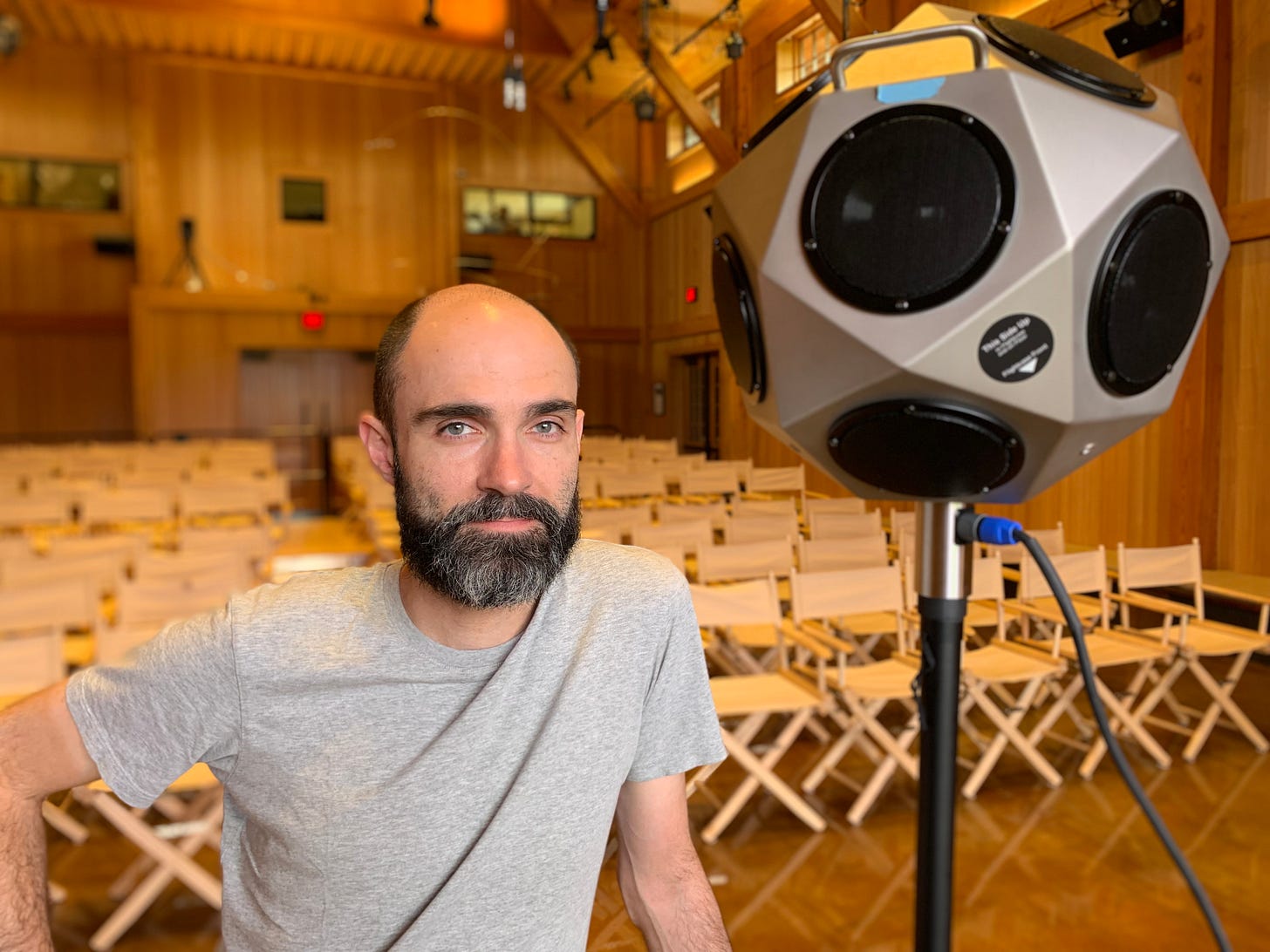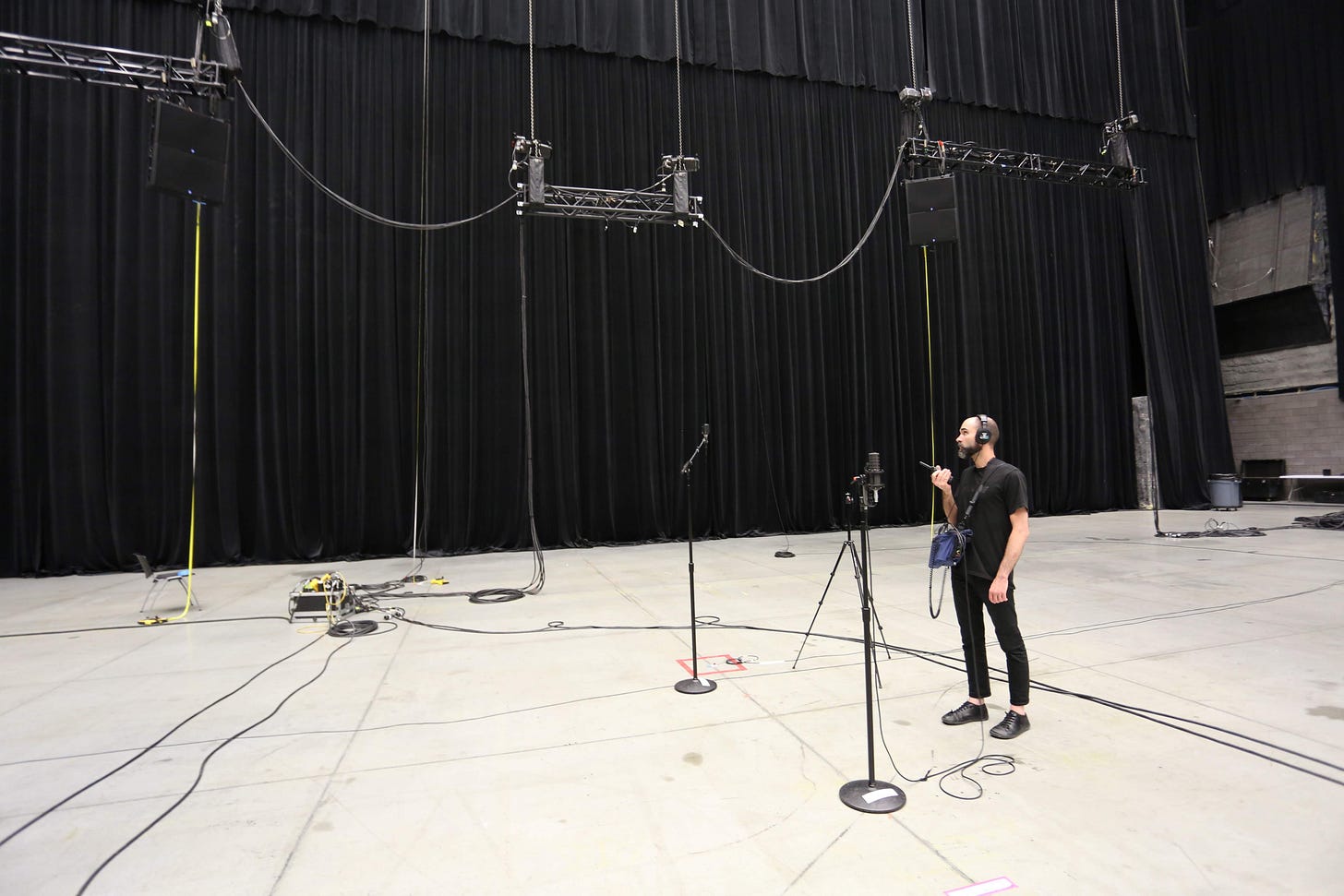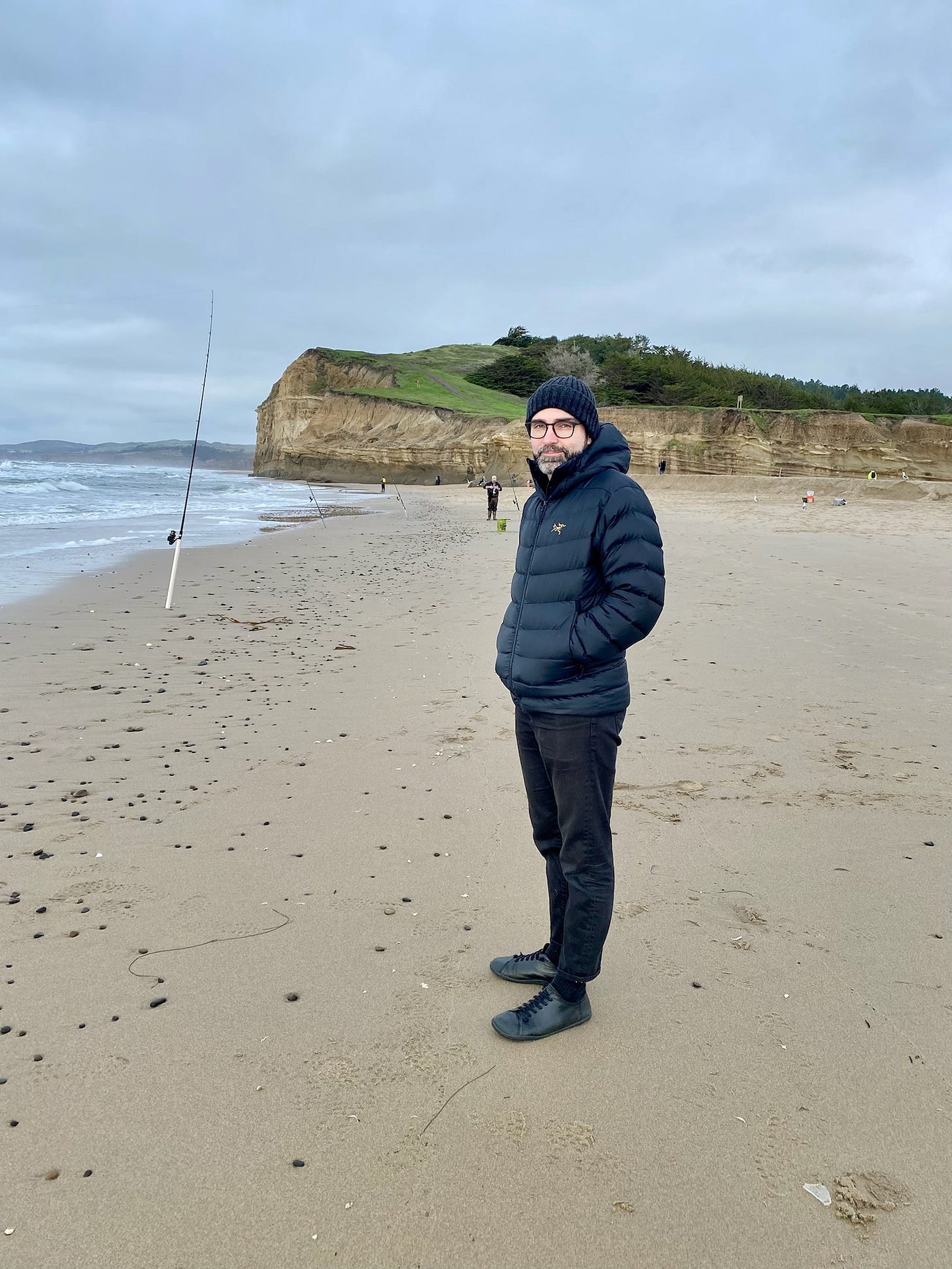Interview: Joseph Digerness
an Arup acoustic engineer's thoughts on proprioception and perfectionism
This interview has been edited for clarity.
A lot of the time I spent editing this interview boiled down to me trying to spell “acoustician”, and then subsequently trying to define it. When I asked Joseph to describe his role at the global engineering consulting firm Arup, he told me there were two responses, depending on who’s asking: “I say acoustician if I don’t really want to be talking to this person for very long… or that I do pretty much anything involving sound and vibration in the built environment.”
Luckily, he gave me the second answer when I started peppering him with questions in the middle of the party where we first met. I was curious about the firm’s acoustic engineering division; the day before I formally met Joseph, I’d encountered his team’s work at the Lou Reed Listening Room, part of the New York Public Library for the Performing Arts’ ongoing exhibit on the artists’ work. The Listening Room, essentially an acoustically controlled black box filled with screens and speakers, was designed by a team of Arup engineers to mimic the exact sonic experience Reed had while enacting his experimental sound art piece Metal Machine Trio: The Creation of the Universe live onstage in 2009.
While the engineers tinkered with the audio clips and settings of the twelve speakers—mono, stereo, ambisonic, whatever else is in between—I tried to listen. Like trying to breathe, consciously performing a typically subconscious action was difficult and awkward and rewarding and beautiful. This concept–the relationship between the subconscious and the conscious, the body and the mind–is a theme in Joseph’s work as well as his identity as a musician.
Just before I stepped into the Listening Room, I had been reading Pauline Oliveros’ book Quantum Listening. The manifesto posits that listening can be a mode of activism, and that listening is different from hearing—it must be intentional. Her work exists at the intersection of sound and consciousness, an intersection that Joseph and I visited many times in this interview. “How we listen creates our life. Listening is the basis of all culture,” Oliveros wrote. When Joseph and I talked about Pauline’s theories, we spoke about how the work of an acoustician seems niche, but is really quite fundamental to all structures in the built and natural environment.
“How we listen creates our life. Listening is the basis of all culture.”
The acoustics team at Arup designs theaters and performance spaces but also deals with sound in a broader sense. “Right now I’m working on a couple of rail projects. It turns out that vibration and sound are really important in those sorts of projects, and that [the acoustics] work goes hand in hand with structural engineers, people that are trying to make sure that the train is safe.” Movement creates vibrations, vibrations create discomfort or distraction; the acoustic engineering team’s role is to mitigate these impacts. As we talked more about railways and their unique challenges—there’s been a proliferation of rail projects across many disciplines of engineering due to an uptick in funding from Biden’s infrastructure bill—and the way that acoustics play into their construction, Joseph drew an interesting comparison between trains and his instrument, the double bass.
The double bass is the largest and lowest-pitched string instrument, emitting frequencies from 41.2 Hz to 392 Hz. It is the only string instrument in the orchestra which is tuned to perfect fourths rather than perfect fifths. It can be bowed or plucked. A standard double bass stands six feet tall, without an endpin. It is a strange and lovely instrument, grand and yet somehow unassuming.
Joseph studied double bass performance in school. His transition into engineering was rather natural from there; in the studio, he was drawn to the process of recording over performing. From there, he moved into more general acoustics and landed in engineering, but with these rail projects, his career is making something like a full circle: “It gets me thinking about perception a lot. The frequency range that the double bass emits is right on the cusp of a lot of the frequencies that I think about as an acoustics engineer, very low frequencies, just above the threshold of where we can perceive—sound versus infrasound.”
“[These frequencies are] just above the threshold of where we can perceive—sound versus infrasound”
Regarding sound waves—those emitted by trains and those of the double bass—he said, “There’s something about having grown up with these notes… I can imagine if something is perceptible or not, because of my familiarity with the double bass.” He said that the majority of the acoustics team identified as musicians of some sort, although some folks came over from signal processing and computation. I asked him whether he thought that background impacted the way that he and his teammates approach engineering.
He answered that the musician’s mortal enemy, perfectionism, played a role in his work as an engineer. The advent of hyper-precise audio editing software allowed producers to obsess over blips in the files that were inaudible. Remembering his time in Nashville as a recording engineer, he said, “The folks that were really good at their jobs just listened.
“Focusing on what actually makes a difference is really important in my job. It’s not quite an exact science, some of the error margins are pretty broad, and so it’s about identifying: what about this design is actually going to make a difference?” I noted that my bandmate Blake and I talk often about perfectionism versus completionism, the constant battle between wanting to get it right and wanting to put it out. Musicians are so often their own worst enemy, always tweaking their songs and never actually finishing them.
“What about this design is actually going to make a difference?”
He quoted Duke Ellington: “If it sounds good, it is good.” Sometimes, in music and in engineering, it becomes important to rely on the subconscious. But sound is not an available medium for perception. Citing the work of double bass virtuoso Gary Karr, Joseph invoked the concept of proprioception: the body transmitting inaudible signals to the central nervous system as if they were sound or another sensory input. “Your body is in contact with a lot of the double bass most of the time—your belly, your shoulders, your legs. The instrument is exciting all these other parts of your body besides your ear. The double bass is really a part of you when you’re playing it.”
As Joseph has discovered as a double bassist, sound can be felt even when it cannot be heard. I asked him if that subconscious perception has a place in engineering. He answered affirmatively: “Don’t let your mind or a sound level meter tell you what you’re experiencing. Experience it and then come up with words for it if you can.”







